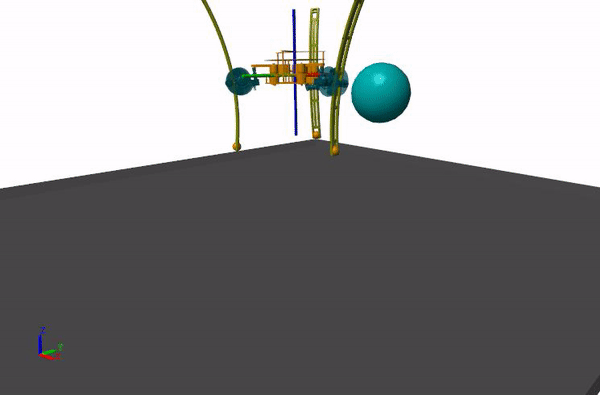Decentralized Gait Generator
Goal
The goal of this project was the design and implementation of a simple decentralized gait generator in which each leg has a independent controller. Each controller can only use local sensor information and has no knowledge of the total number of legs or their position.
Problem/Complication
Since typical model predictive control approaches do not work with multiple independent systems, this required a complete rethinking of walking robot control.
A further complication is that one first has to investigate how a three-legged system can even walk, meaning what kind of gaits are possible.
Contribution
I first specified the possible walking gaits of a three-legged system. Using a self-developed switching diagram, I analyzed which gaits are easiest to decentralize. These switching diagrams pictured below show the required hybrid switches for a given gait.

Additional information about the different gaits can be found here.
Using the best-suited gaits, I developed a hybrid controller for each leg. It comprises three individual controllers, controlling the leg while on the ground, in the air, and lastly, choosing when to switch between the two.

To judge the system’s stability, the controllers model the system as a mixture of three linearized inverted pendulums. converting this pendulum mixture model into barycentric coordinates yields a formulation that easily expresses the available information for each leg.
Result
The new controller results in stable movement, as can be seen down below. 
Note that the perfectly synchronous moving of the chassis is due to the self-synchronization of the weight redistribution controller, which can be seen here:

Since the controller also makes no assumptions about the position and number of different legs, it is also able to control this QuadPed:

Ultimately, however, the system is still rather slow and reacts poorly to outside disturbances. To mitigate this, I want to replace the weight redistribution with a game-theoretic controller using what I call a Talker Listener Game. This, however is still part of my active research.
Additionally, the controller has yet to be tested on the actual TriPed.
